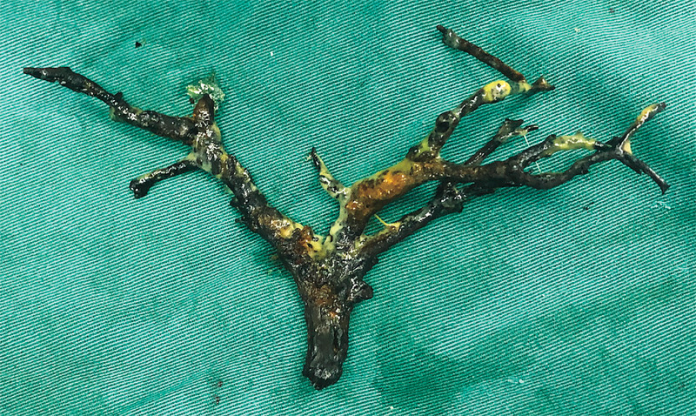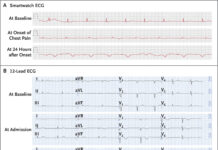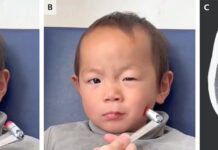A 62-year-old female patient presented to the emergency department with biliary cast syndrome, a complication of orthotopic liver transplant
A 62-year-old female patient presented to the emergency department with jaundice that had developed 3 months after undergoing orthotopic liver transplantation. According to the patient, the jaundice had appeared 2 months ago.
Laboratory studies revealed total bilirubin level of 14.3 mg per decilitre(245 μmol per liter) (normal range, 0.2 to 1.2 mg per decilitre [3.4 to 20.5 μmol per liter]), a serum alanine aminotransferase level of 74 U per litre (normal range, 7 to 40), and a serum aspartate aminotransferase level of 41 U per litre (normal range, 13 to 35).
For further evaluation, a T-tube cholangiography was performed which showed a filling defect at the upper end and dilation of the lower end of the common bile duct. In addition, magnetic resonance imaging showed thinning of the intrahepatic bile duct. An attempt at retrograde cholangiopancreatography was unsuccessful.
The clinical condition of the patient deteriorated and she ultimately had to undergo a second orthotopic liver transplantation. Biliary casts were found during the procedure and removed from the intrahepatic bile duct and the upper end of the common bile duct. بلاك جاك 21
Biliary cast syndrome
Biliary cast syndrome is a rare disorder characterised by development of casts in the biliary ducts after liver transplant. It causes obstruction and leads to hepatic and ductal damage. The syndrome is commonly reported in patients with liver transplant and is unusually found otherwise. العاب الروليت
After removal of the biliary casts, the jaundice resolved and the laboratory results returned to baseline levels. The patient was doing well at 6 months follow-up. كازينو البحرين
References
Wang, K., & Wu, S. (2020). Biliary Cast Syndrome. New England Journal of Medicine, 382(9), e13.




